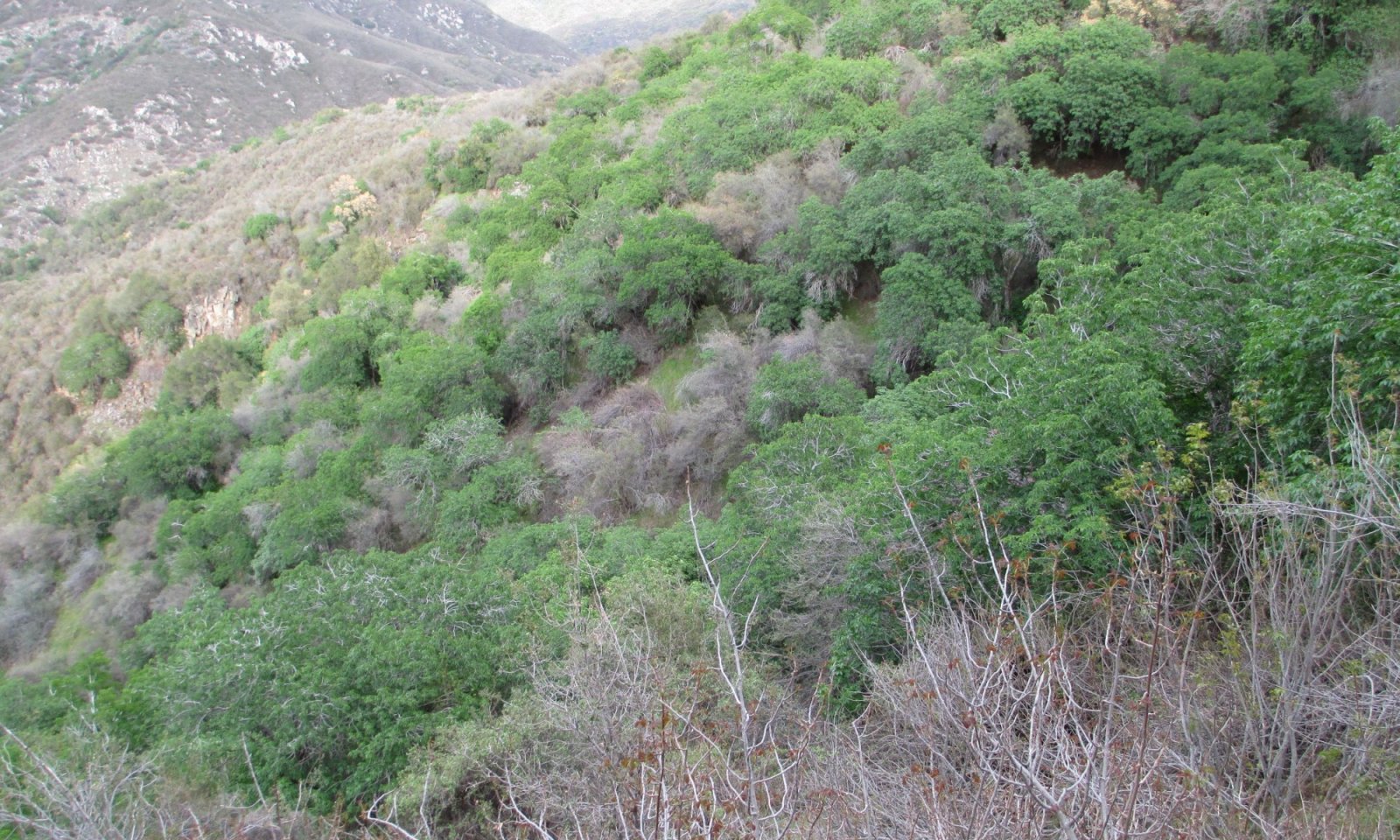
Cool Thermic Shallowly Dissected Slopes
Scenario model
Current ecosystem state
Select a state
Management practices/drivers
Select a transition or restoration pathway
- Transition T1.a More details
- Transition T1.b More details
- Restoration pathway R2.a More details
- Transition T2.a More details
- Restoration pathway R3.a More details
-
No transition or restoration pathway between the selected states has been described
Target ecosystem state
Select a state
Submodel
Submodel
Mechanism
This transition occurs after multiple stand replacing fires reduce the fitness of chaparral shrubs and annual grasses can outcompete woody vegetation. This is not a common transition, but historical records show that indigenous peoples facilitated this dynamic.
Mechanism
This transition occurs after heavy winter rains occur shortly after stand replacing fires, before reestablishment of plants.
Mechanism
This restoration pathway occurs with reseeding of native shrub species.
Mechanism
This transition occurs after heavy winter rains occur shortly after intense grass fires, before reestablishment of plants stabilizes the soils.
Model keys
Briefcase
Add ecological sites and Major Land Resource Areas to your briefcase by clicking on the briefcase (![]() ) icon wherever it occurs. Drag and drop items to reorder. Cookies are used to store briefcase items between browsing sessions. Because of this, the number of items that can be added to your briefcase is limited, and briefcase items added on one device and browser cannot be accessed from another device or browser. Users who do not wish to place cookies on their devices should not use the briefcase tool. Briefcase cookies serve no other purpose than described here and are deleted whenever browsing history is cleared.
) icon wherever it occurs. Drag and drop items to reorder. Cookies are used to store briefcase items between browsing sessions. Because of this, the number of items that can be added to your briefcase is limited, and briefcase items added on one device and browser cannot be accessed from another device or browser. Users who do not wish to place cookies on their devices should not use the briefcase tool. Briefcase cookies serve no other purpose than described here and are deleted whenever browsing history is cleared.
Ecological sites
Major Land Resource Areas
The Ecosystem Dynamics Interpretive Tool is an information system framework developed by the USDA-ARS Jornada Experimental Range, USDA Natural Resources Conservation Service, and New Mexico State University.


